Capturing what a student has learned in a lesson can be powerful indicator of success. When students know how to engage in effective classroom discussions, they learn. As I shared in this blog entry on argumentation, a classroom discussion strategy, this strategy offers much. In that entry, I pointed out that:
Argumentation makes it possible for students to connect with one another. Use this strategy to activate prior knowledge and explore new topics. Students are able to learn from others and show learning. It engages students and gives all students the chance to take part.
Yet, at the end of the blog entry, I left a question unanswered. That question was, “What are some argumentation strategies?” In this blog entry, I would like to answer that question and offer a handy infographic and multimedia text set to learn more.
A Multimedia Text Set: Classroom Discussion
Want to get some background knowledge on classroom discussion? Then be sure to explore this short multimedia text set to learn more about it.
Strategy #1: Think-Puzzle-Explore
Remember that one of the benefits of classroom discussion is tracking student ideas. You need to make their thinking visible, as it happens. One easy approach? Use a chart board or whiteboard to do that. You can also use an online learning management system such as Google Classroom with Jamboard or Microsoft Team “stream” or conversation area or your standalone digital whiteboard solution.
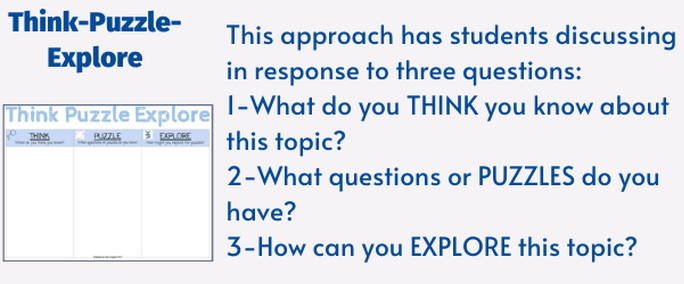
The Think-Puzzle-Explore approach centers discussion around three questions, including:
- What do you THINK you know about this topic?
- What questions or PUZZLES do you have?
- How can you EXPLORE this topic?
“In this routine, students are generally sharing their thinking at each step along the way. Then, they move on to the next one. This allows the class to build on the group’s thinking. It results in richer discussions” (source). See the example below:
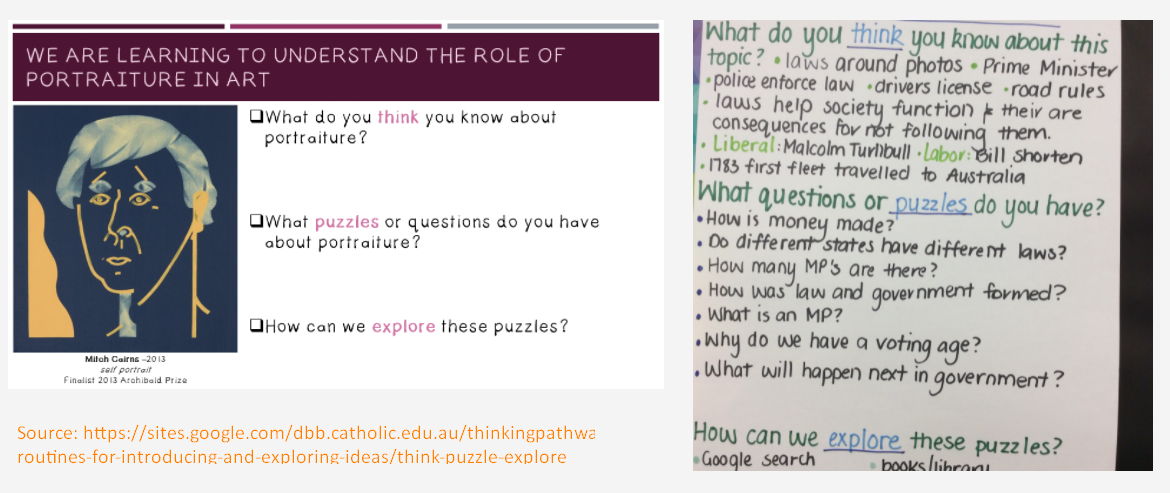
Strategy #2: Multimedia Text Sets
Lisa Highfill’s Multimedia Text Sets (MMTS) ease the sharing of new information. Multimedia text sets help learners glean information and ideas that may come from a variety of media sources. Get a copy of a multimedia text set about MMTSs for your own.
One other powerful idea is that a short MMTS is also easy to include during instruction. Then, students on their own or students in small groups can share their thinking. Since the MMTS is a digital document in Google Docs/Slides, Padlet Sandbox, or OneNote, it’s easy to capture.
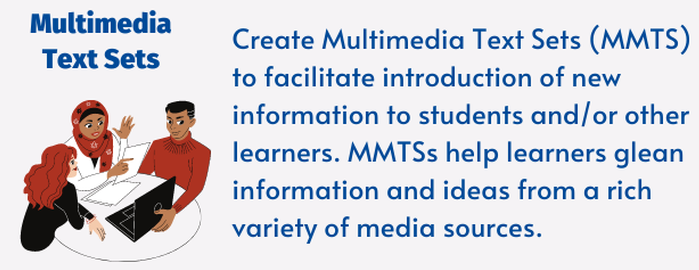
Strategy #3: Thoughts, Questions, or Epiphanies
Ready to explore Marisa E. Thompson’s TQE Process? In her blog entry, The Unlimited Teacher, she shares the TQE process:
- Students read the assigned reading at home with annotations.
- Small group discussions as students enter the room.
- Share question stems for students as needed.
- Students start with the stems on the left, but progress to more difficult ones after teacher modeling.
- Students post their top two of each TQE by the end of 15 minutes:
- Thoughts
- Lingering Questions
- Epiphanies
Then, at the end, they have a class discussion about the TQEs. Marisa provides some scaffolding for small group discussions. She suggests they start with a list of WHAT questions (e.g. What do you think will happen?). After that, they move to discussing author motivation and insights (e.g. Why would the author?).

I love how easy it is to use the annotating a text guidelines Marisa shares. She suggests dividing a page in two. On the left side of the page, you summarize anything the author left behind. This can include arguments, claims, ideas, intended audience, etc. On the right side, summarize anything you wonder about.
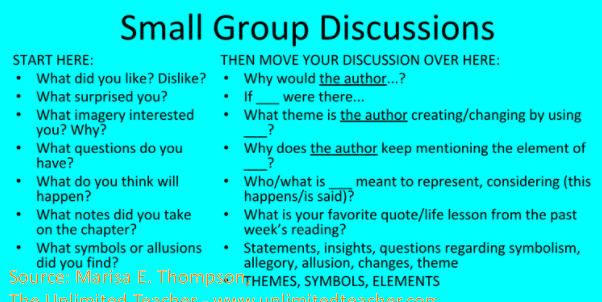
Get the image via The Unlimited Teacher
Be sure to read Marisa’s blog entry for more information. You can also get her discussion stems via Teachers Pay Teachers.
Get the Infographic for Better Classroom Discussion
Now you may notice that I’ve not listed all the classroom discussions mentioned. In fact, I have left one of them off. Explore this short multimedia text to find out which.
Feature Image Source
Photo by Taylor Flowe on Unsplash

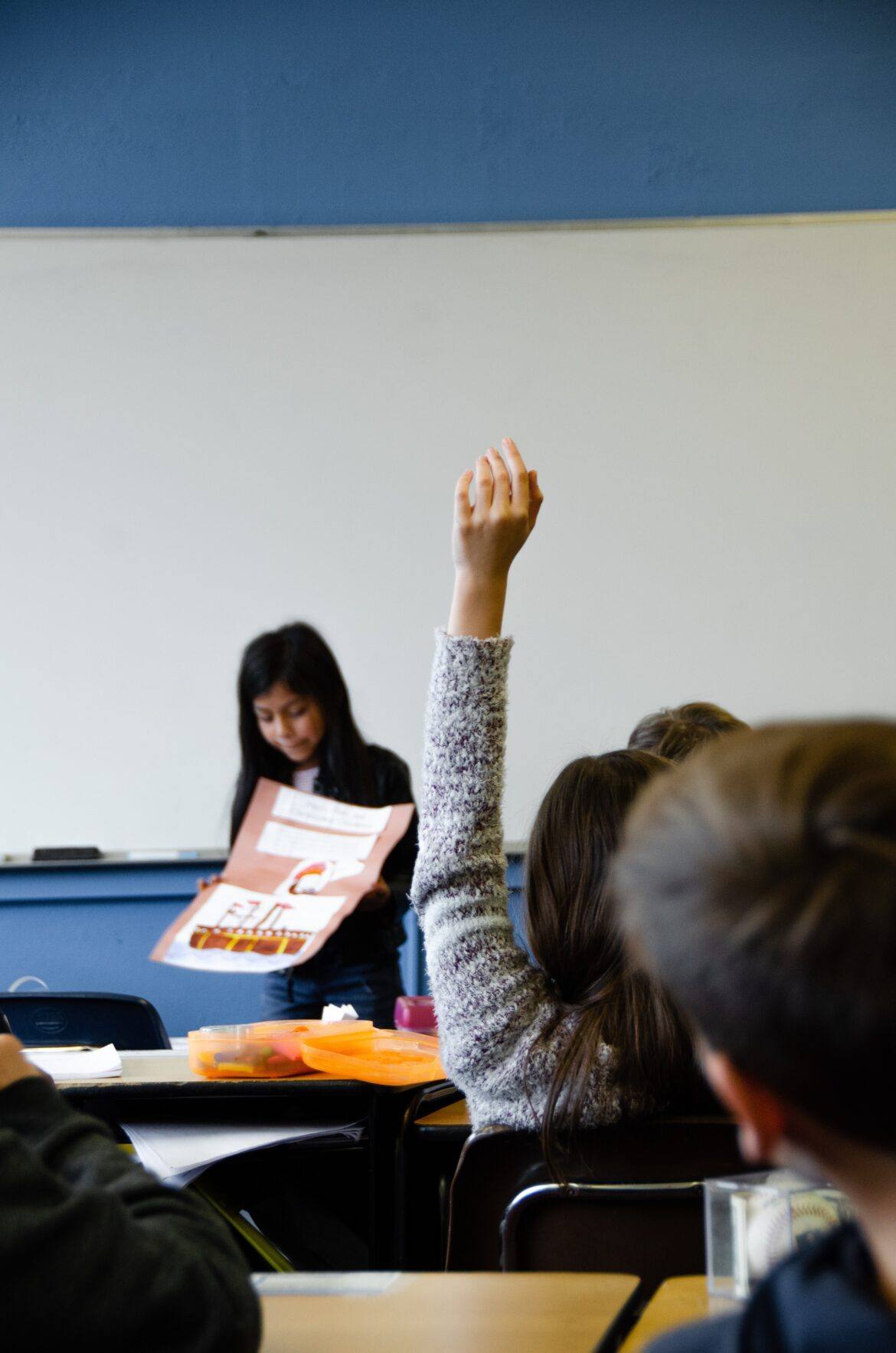
2 comments
How could this strategy be used for informational text especially related to engineering and emerging technologies?
Classroom discussion is focused on making student thinking visible. Since it is a deep learning strategy, you can choose to have students list their predictions based on pictures and title in informational text, then revisit how those were inaccurate/accurate the more they read. Again, the goal of classroom discussion is to have students make their thinking visible so that you can tailor instruction, correct misconceptions.
An alternate strategy to use would be jigsaw, which lends itself for use here and that can fuel the Predictions/Misconceptions/Aha lists. Or, have them create a concept map. I discuss this in more detail in
https://blog.tcea.org/how-to-design-science-lessons-based-on-instructional-research/
Of course, you can also use Reciprocal Teaching which is intended for use with text and works quite well with non-fiction text. It includes Prediction, Questioning, Summarizing, and Clarifying. Your question implies, perhaps, that these strategies work only for literature and fiction. If that is what you suggest, that is not the case. I have employed all of the strategies mentioned (Classroom Discussion, Reciprocal Teaching, and Jigsaw) with non-fiction text, usually science or analytical findings.
Give it a shot. The results will be quite interesting, I assure you.
🙂
Miguel